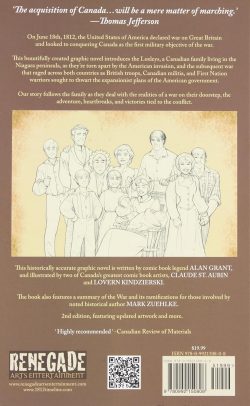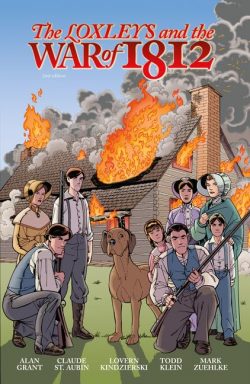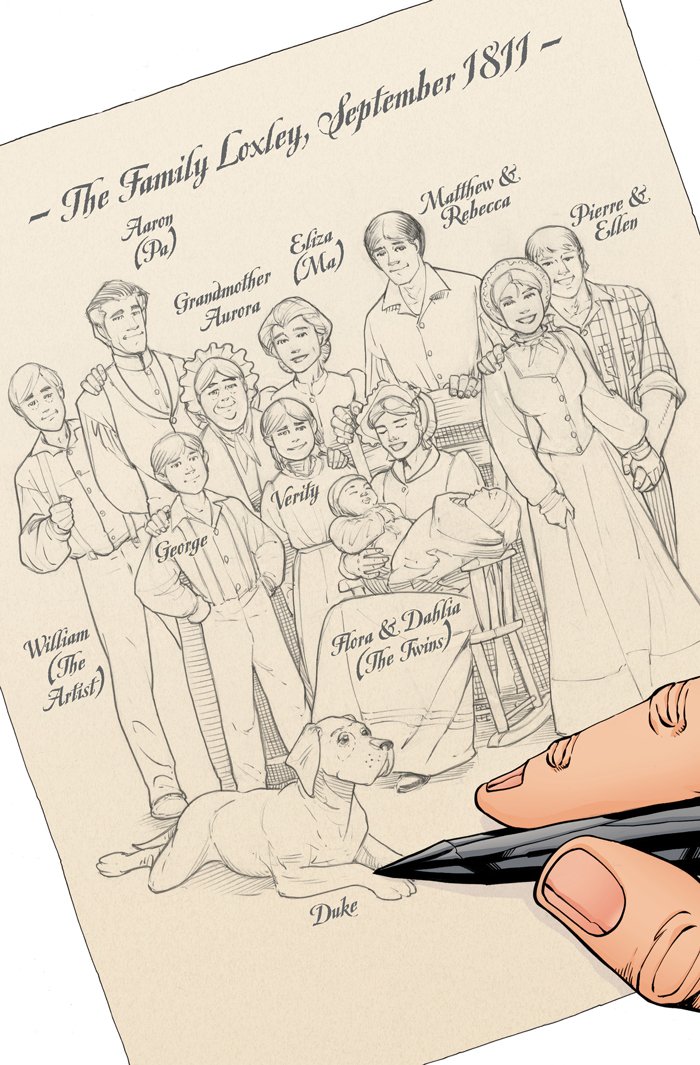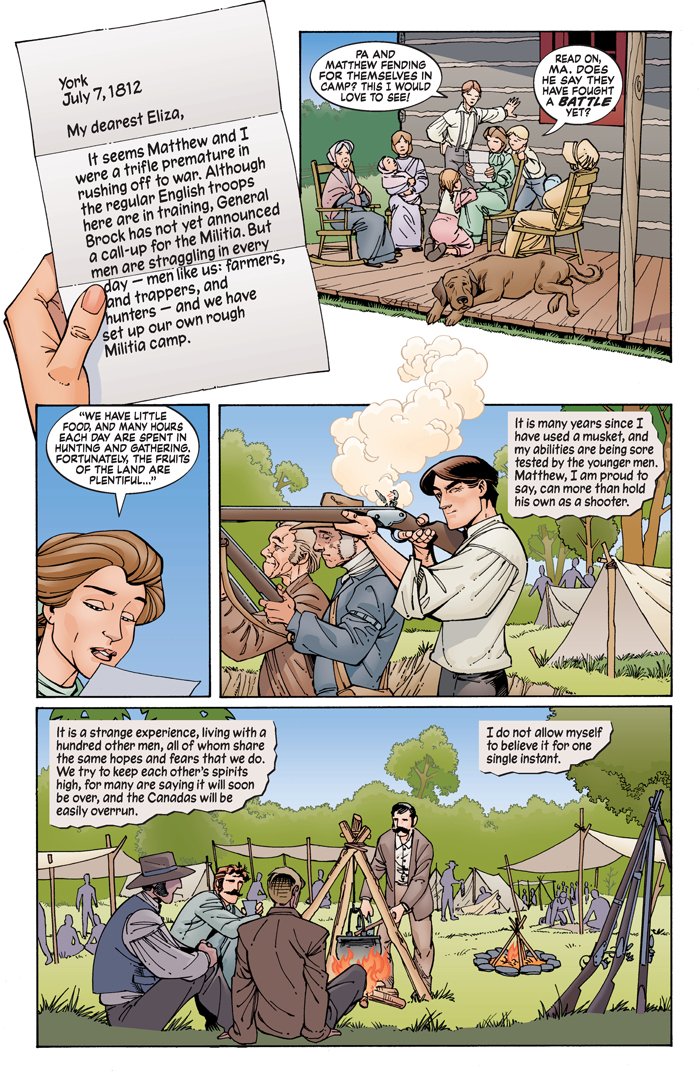
By Gardner F. Fox, Hal Sherman, Stan Aschmeier, Jon Chester Kozlak & various (DC Comics)
ISBN: 978-1-4012-1308-0 (HB)
This book includes Discriminatory Content produced in less enlightened times.
There are many comics anniversaries this year. The most significant will be rightly celebrated, but some are going to be unjustly ignored. As a feverish fanboy wedged firmly in the past, I’m still abusing my privileges to revisit another brilliant vintage book, criminally out of print and not slated for revival either physically or in digital formats…
One of the most interesting aspects of DC’s Golden Age superhero pantheon is just how much more they gripped the attention of writers and readers from succeeding generations, even if they didn’t set the world alight during their original “Glory Days”. So many relatively short-lived or genuinely second-string characters with a remarkably short shelf life through the formative years of the industry have, since the Silver Age which began in 1956, seldom been far from our attention: constantly revived, rebooted and resurrected. Some even make it onto the big and small screens…
One of the most revered, revisited and frequently revived is Doctor Fate, who first appeared in 1940, courtesy of writer Gardner F. Fox and the uniquely stylistic Howard Sherman. Although starting strong, Fate was another incredibly powerful man of mystery who failed to capture the imaginations of enough readers to build on the chimeric tone of the times. He underwent radical revision midway through his premier run, but with little effect. Dr. Fate lost his strip even before WWII ended. However, since his Silver Age revival, the good doctor has become a popular and resolute cornerstone of more than one DC Universe and he’s still going strong, albeit via some daringly radical forms.
In this magnificent graphic grimoire, following the historically informative and laudatory Foreword by big-time devotee fan/ Keeper of the Golden Age Flame Roy Thomas, this monumental 400-page full-colour deluxe hardback (representing the entirety of Doctor Fate’s run from More Fun Comics #55-98 (May 1940 to July/August 1944)) introduces the potentate of peril in a 6-page parable wherein he combats ‘The Menace of Wotan’.
For those simpler times, origins and motivations were far less important than plot and action, so this eerie yarn focuses on an eerie blue-skinned Mephistopheles’ scheme to assassinate comely yet enigmatic lady of leisure Inza Cramer and how her forceful golden-helmed protector thwarts the plot. Our hero deals harshly with the nefarious azure mage, barely mentioning in passing that Fate possesses all the lost knowledge and lore of ancient civilisations. That’s probably the biggest difference between the original and today’s Fate: back then, he was no sorcerer but an adept of forgotten science (a distinction cribbed from many Lovecraftian horror tales of the previous two decades of pulp fiction): a hair-splitting difference all but lost on the youthful readers.
Eighty-five years later (MFC #55 was on sale from March 29th 1940) we can enjoy again one of the most sophisticated relationships in comics. Fate’s soon-to-be-inseparable companion in peril – latterly Inza Nelson and Doctor Fate in her own right – was clearly also the thaumic troubleshooter’s paramour and disciple and an active player in all the action. However, she didn’t get to be the lead until the 1990s…
In #56 – which boasted the first of 11 cover spots for the Wielder of Old Wisdoms –‘The Search for Wotan’ sees Fate carry Inza up the Stairs of Judgement to Heaven, where they learn their foe is not dead but actually preparing to blow up Earth. Foiling the plan but unable to permanently despatch the big blue meanie, Fate is forced to bury his enemy alive at the centre of the world. Next issue revealed ‘The Fire Murders’ as certified doom-magnet Inza is targeted by mystic arsonist Mango the Mighty before her guardian Fate swiftly ends his campaign of terror, whilst in #58 a modern mage recovers ‘The Book of Thoth’ from its watery tomb, unleashing a wave of appalling, uncanny phenomena until the Blue-&-Gold Gladiator steps in. The self-appointed bulwark against wicked mysticism levitates out of his comfort zone in More Fun #59 to repel an invasion by ‘The People from Outer Space’ but is firmly back in occult territory one month later to destroy ‘The Little Men’ tasked to crush humanity by a mythic triumvirate of colossal Norns.
Behind #61’s striking Sherman cover, ‘Attack of the Nebula’ pits the Puissant Paladin against a cosmic cloud and wandering planetoid summoned by an Earthly madman to devastate Earth, before detailing the doctor derailing a deranged technologist’s robotic coup in #62’s ‘Menace of the Metal Men’ and saving Inza from petrification by ‘The Sorcerer’ in More Fun #63. Like many of Fox’s very best heroic series, Doctor Fate was actually a romantic partnership, with mysterious Inza (only after a number of surnames did she eventually settle on Cramer) acting as assistant, foil, and so very often, target of many macabre menaces. In #64 she and Fate – who still had no civilian identity – share a pleasure cruise to the Caribbean where a slumbering Mayan God of Evil wants to utilise her unique psychic talents in ‘The Mystery of Mayoor’.

Inza got a brief rest in #65 as Fate soloed in a bombastic battle to repel an invasion of America by ‘The Fish-Men of Nyarl-Amen’, but plays a starring role in the next episode as the Doctor exposes a sadistic crook seeking to drive his wealthy cousin to suicide by convincing her that she is ‘The Leopard Girl’…
A year after his debut, More Fun Comics #67 (May 1941) at last revealed ‘The Origin of Doctor Fate’: depicting how in 1920, American boy Kent Nelson had accompanied his father Sven on an archaeological dig to Ur. Broaching a pre-Chaldean pyramid, the lad awakened a dormant half-million-year-old alien from the planet Cilia, as well as accidentally triggering security systems that kill his father. Out of gratitude and remorse, the being known as Nabu the Wise trained Kent for two decades, teaching him how to harness the hidden forces of the universe – levitation, telekinesis and the secrets of the atom – before sending him out into the world to battle those who used magic and science with evil intent.
That epic sequence only took up three pages, however, and the remainder of the instalment finds time and space for Fate & Inza to repel a ghostly incursion and convince Lord of the Dead Black Negal to stay away from the lands of the living…
Fate had graduated to 10-page tales and claimed the covers of More Fun #68-76, beginning a classic run of spectacular thrillers by firstly crushing a scientific slaughterer who had built an invisible killing field in ‘Murder in Baranga Marsh’, before gaining a deadly archenemy in #69 as deranged physicist Ian Karkull uses a ray to turn his gang into ‘The Shadow Killers’. In #70, the shadow master allies with Fate’s first foe as ‘Wotan and Karkull’ construct an arsenal of doomsday weapons in the arctic. They are still too weak to beat the Master of Cosmic Forces though, whereas rogue solar scientist Igorovich would have successfully blackmailed the entire planet with ‘The Great Drought’ had Inza not dramatically intervened.
With involvement in WWII now clearly inevitable, covers had increasingly become more martial and patriotic in nature, and with More Fun #72 (October 1941) Fate underwent an unexpected and radical change in nature. The full-face helmet was replaced with a gleaming metallic half hood and his powers were diminished. Moreover, the hero was no longer a cold, emotionless force of nature, but a passionate, lusty, two-fisted swashbuckler throwing more punches than pulses of eerie energy. His previous physical invulnerability was countered by revealing that his lungs were merely human and he could be drowned, poisoned or asphyxiated…
The quality and character of his opposition changed too. ‘The Forger’ pits him against a gang of conmen targeting Inza’s family and other farmers: altering intercepted bank documents to pull off cruel swindles. A far more rational and reasonable nemesis debuted in MF #73 when criminal mastermind ‘Mr. Who’ uses his body-morphing, forced-evolution “Solution Z” to perpetrate a series of sensational robberies.

Despite a rather brutal trouncing – and apparent death – the brute returned in #74 in ‘Mr. Who Lives Again’, with the sinister scientist employing his abilities to replace the City Mayor, whilst in #75 ‘The Battle Against Time’ finds Fate racing to locate the killer who framed Inza’s best friend for murder. Underworld chess master Michael Krugor manipulates people like pawns but ‘The King of Crime’ is himself overmatched and outplayed when he tries to use Inza against Fate, after which #77 saw a welcome – if brief – return to the grand old days as ‘Art for Crime’s Sake’ finds the Man of Mystery braving a magical world of monsters within an ancient Chinese painting to save young lovers eldritchly exiled by a greedy art dealer…
MF #78 details how clever bandits disguise themselves as statues of ‘The Wax Museum Killers’, whilst #79’s ‘The Deadly Designs of Mr. Who’ reveal how the metamorphic maniac attempts to impersonate and replace one of the richest men on Earth, before #80’s innovative felon ‘The Octopus’ turns a circus into his playground for High Society plunder. In More Fun #81, cunning crook The Clock exploits radio show ‘Hall of Lost Heirs’ to trawl for fresh victims and easy pickings prior to the next issue finding Fate exposing the schemes of stage magician/conman The Red Sage, who was offering ‘Luck for Sale!’…
‘The Two Fates!’ sees fortune tellers using extortion and murder to bolster their rigged prognostications only to be stopped by the real deal and in #84, the energetic evil-buster braves ‘Crime’s Hobby House!’ to stop thieving special effects wizard Mordaunt Grimm using rich men’s own pastimes to rob them.
Clearly still floundering the series saw big changes for Kent Nelson with #85. Here the stereotyped society idler rapidly and implausibly qualifies as a surgeon and medical doctor, before embarking on a new career of service to humanity. Additionally, his supra-human alter ego ditches the golden cape to become an acrobatic and human – albeit still bulletproof – crimebuster exposing a greedy plastic surgeon helping crooks escape justice as ‘The Man Who Changed Faces!’
Medical themes predominated in these later tales. ‘The Man Who Wanted No Medals’ was a brilliant surgeon who feared a crushing youthful indiscretion would be exposed and #87’s ‘The Mystery of Room 406’ dealt with a hospital cubicle where even the healthiest patients always died. In ‘The Victim of Doctor Fate!’, Nelson suffers crippling self-doubt after failing to save a patient. These only fade after the surgeon’s diligent enquiries reveal the murderous hands of Mad Dog McBain secretly behind the untimely demise…
Charlatan soothsaying scoundrel Krishna Das is exposed by Fate & Inza in #89’s ‘The Case of the Crystal Crimes’, after which ‘The Case of the Healthy Patient!’ pits them against a fraudulent doctor and incurable hypochondriac. Using his chemical conjurations to shrink our hero to doll size in #91’s ‘The Man Who Belittled Fate!’, Mr. Who resurfaces, but is soundly sent packing and – whilst still in jail – the Thief of Time strikes again in More Fun #92 as ‘Fate Turns Back The Clock!’ Next issue, superbly efficient and underrated Hal Sherman ended his long association with the strip in ‘The Legend of Lucky Lane’, wherein an impossibly fortunate felon finally plays the odds once too often…
As the page-count dropped back to 6 pages, Stan Aschmeier illustrated the next two adventures, beginning with 94’s ‘The Destiny of Mr. Coffin!’ as Fate comes to the aid of a fatalistic old soul framed as a fence, whilst ‘Flame in the Night!’ sees a matchbox collector targeted by killers who think he knows too much…
With the end clearly in sight, Jon Chester Kozlak took over the art, beginning with More Fun #96’s ‘Forgotten Magic!’, wherein Fate’s supernal Chaldean sponsor is forced to remove the hero’s remaining superhuman abilities for a day – leaving Kent Nelson to save trapped miners and foil their swindling boss with nothing but wits and courage. The restored champion then exposes the spurious bad luck reputed to plague ‘Pharaoh’s Lamp!’ and ends/suspends his crime-crushing career in #98 by sorting out a case of mistaken identity when a young boy is confused with diminutive Stumpy Small AKA ‘The Bashful King of Crime!’…
With the first age of superheroes coming to a close, the readership were developing new tastes. Fate’s costumed co-stars Green Arrow, Aquaman and Johnny Quick – along with debuting super-successful concept Superboy – all migrated to Adventure Comics, leaving More Fun as an anthology of cartoon comedy features. Initially dark, broodingly exotic and often genuinely spooky, Doctor Fate smoothly switched to the bombastic, boisterous, flamboyant and vividly exuberant post war Fights ‘n’ Tights style but couldn’t escape evolving times and trends. Here and forever, however, both halves of his early career can be seen as a lost treasure trove of pulse-pounding pulp drama, tense suspense, eerie enigmas, spectacular action and fabulous fun: one no lover of Costumed Dramas or sheer comics wonderment can afford to miss. Let’s hope the weird world of movies can pay us old comic geeks a dividend in a new edition sometime soon…
© 1940, 1941, 1942, 1943, 1944, 2007 DC Comics. All Rights Reserved.























